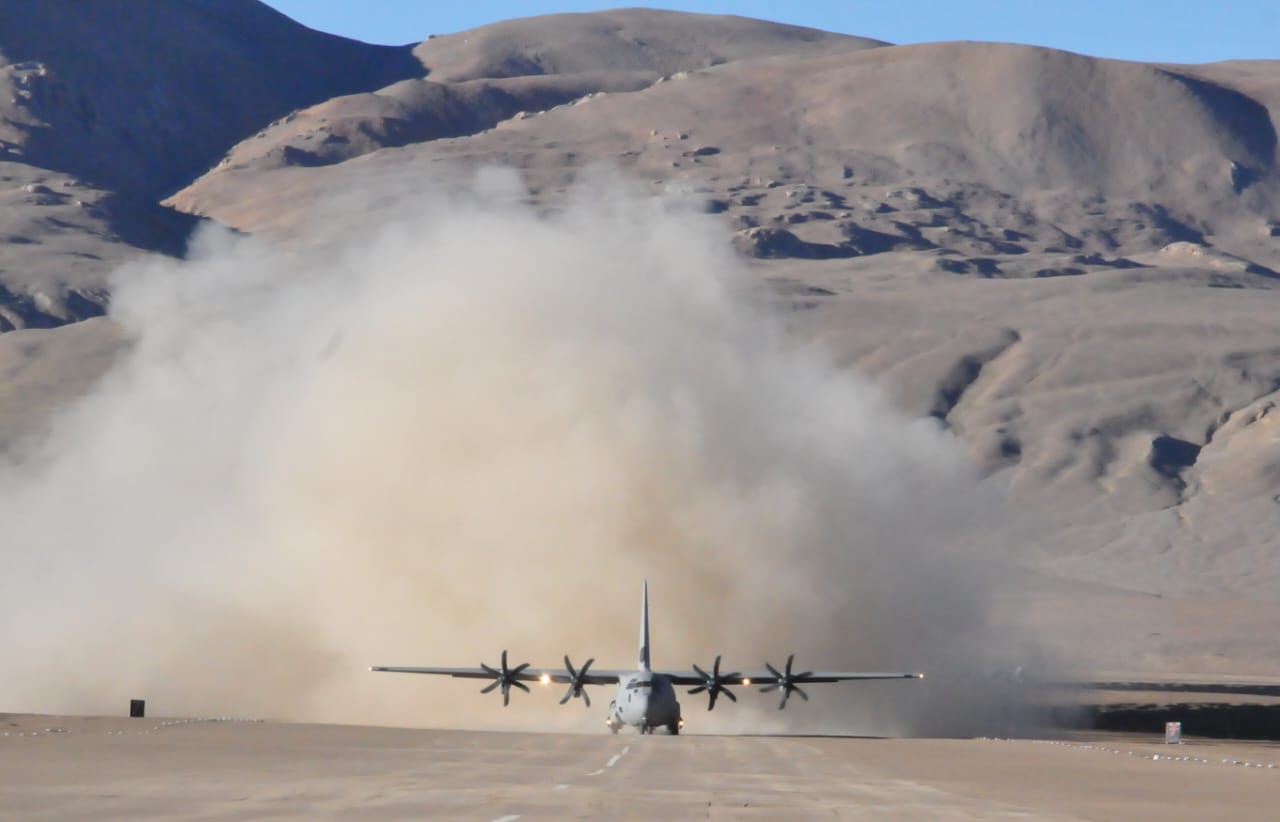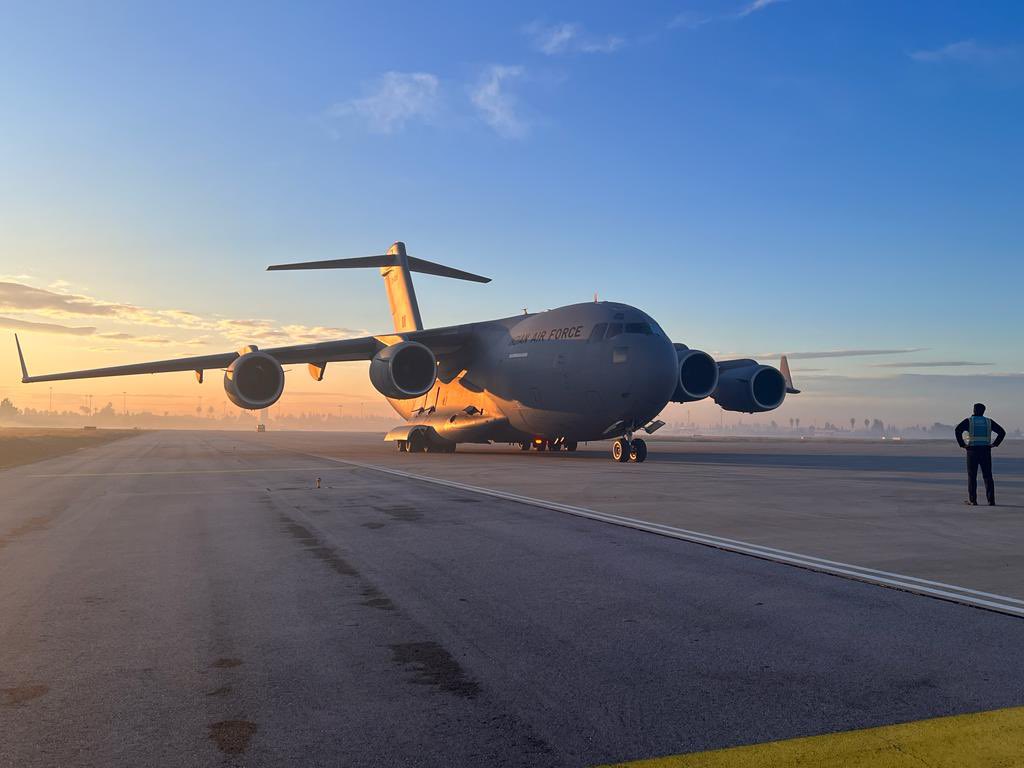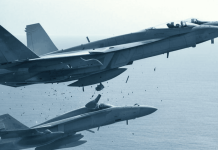It has been ten years since the US special mission aircraft C-130J Super Hercules landed at Daulat Beg Oldie (DBO), the highest airstrip in the world at 16,614 feet, which is located near the Line of Actual Control (LAC) with China.
Since then, it and another American transporter C-17 Globemaster have become a conduit to project the Indian Air Force’s (IAF) might both on the country’s borders and thousands of miles away.
Both aircraft played a pivotal role in airlifting men and material on the Indo-China boundary after the Galwan clash with an alacrity that flummoxed the People’s Liberation Army. The two transport aircraft have undertaken numerous rescue missions in high-conflict zones to bring back stuck Indians.
Be it Afghanistan overtaken by the Taliban or war-torn Sudan, the two aircraft have been at the forefront of Indian operations. A detailed insight into the daring rescue operations conducted by these two aircraft can be read in the EurAsian Times.
The Russian An-32 and IL-76s have been the mainstay of the IAF’s airlift capability. It was an An-32 that reactivated the strategic airbase of DBO in the northern Himalayas after 43 years. But with the limited load-carrying capacity of the Russian transport aircraft, the IAF decided to land a C-130J here.
C-130J gives the IAF a six-fold increase in deployment capabilities over the An-32 and Mi-17s so far deployed to DBO.
The enhanced airlift capability put the IAF in a better position to meet the requirements of the Indian Army, which is entirely dependent on air support to sustain and maintain its position at these frigid heights.
The special operations squadron, the “Veiled Vipers,” can quickly deploy forces in all weather conditions, including airdrops and landings on unprepared or semi-prepared surfaces. It is the projection that the IAF can reach the inhospitable terrains to support the Indian Army, and it is a morale booster.

And the IAF’s assessment was not wrong. And it came in handy for the IAF in 2020 when 20 Indian soldiers died in a bloody clash with the Chinese forces in the Galwan Valley.
The PLA build-up on the Chinese side has been large. Galwan has been one of the trigger points of the 1962 war between India and China. In 2020, troops remained entrenched on their respective sides. Over 80 tents were spotted on the Chinese side.
The Indian Armed Forces didn’t lose any time and swung into action. Its entire transport fleet was activated, including the C-130s and C-17s. They airlifted 68000 troops, 330 infantry vehicles, and over 90 tanks and artillery guns.
Plans are now afoot to expand the Nyoma Advanced Landing Ground (ALG) in eastern Ladakh into a full-fledged operating base from where fighter aircraft and bigger transport aircraft like C-17 can take off and land. The Nyoma ALG is made of mud, allowing only specialized transport aircraft like the C-130J and helicopters to land.
The two US transporters have a technological edge over their Russian counterparts in terms of their propulsion systems. The C-17 has four Pratt & Whitney F117-PW-100 turbofan power packs, and the C-130J-30s has four Rolls-Royce AE 2100D3 turboprop engines, each rated at 4,591 shaft horsepower or 3,425 kW.
These engines pack more power for the aircraft to operate under extreme conditions. On the other hand, the Il-76s are powered with four Aviadvigatel PS-90-76 turbofan engines and the An-32 by two ZMKB Progress AI-20DM turboprop power packs, respectively. The C-17 can carry 74 tonnes of cargo compared to the Il-76s 42-tonne payload.
DBO Landing – A Military Decision
The IAF’s requests to the government to reactivate DBO were denied lest it rubbed China the wrong way. Then Vice Chief of Air Staff Air Marshal (retd) Pranab Kumar Barbora studied the IAF’s requests to the Ministry of Defense and decided to land a turboprop twin-engine Antonov An-32 aircraft at DBO.
Before arriving at the decision, he consulted then Chief of Air Staff Air Chief Marshal Fali Homi Major and the Army Chief General Deepak Kapoor.

In an interview with an Indian News Agency, Air Marshal Barbora said: “….now since nothing was done in writing, the government was informed only after I had landed and come back from there and through proper channels. So, the government asked why did you do it? We said it is my responsibility, the air force’s responsibility, to maintain troops, logistics support, and any kind of emergency troops deployment, weapons deployment…
“…whatever it might be – we can do it now, not using helicopters anymore, it’s by a transport aircraft which can carry much more load and bring backload – so we said it is our…. responsibility as Indian Air Force and it falls within our jurisdiction and Indian territory, so we did it…” The Air Marshal (Retd) further stated, “….we broke the ice and proved a point that we were capable. We surprised the Chinese. Later, in 2013, a four-engine aircraft C-130 Hercules landed there…”
Apart from the muddy strip acting as landing ground, the biggest issue in landing the aircraft at that height is the elevation. A rarefied atmosphere (thin atmosphere means less oxygen- about 40-45 percent less than that at sea level) means no aircraft has these conditions in its engine and aircraft performance parameters.
Aircraft engines require an ideal combination of oxygen and fuel to perform to the best of their potential. The aircrew cannot switch off the engine with less oxygen as it won’t restart. After landing, the engine needs to be kept running. DBO airstrip is surrounded by high mountains with an average height of 20-22,000 ft, making it difficult to maneuver an aircraft in this space.
Presently, the IAF operates 11 C-17s, bought in 2011 through the Foreign Military Sales route. The strategic airlift transporter entered the service of the IAF in September 2013.
The deliveries of 12 C-130J-30s started in 2011. The C-130 Js were divided into two squadrons – the 77 ‘Veiled Vipers’ Squadron at Hindon and the 87′ Wings of Valour’ Squadron at Panagarh in the east.
- Ritu Sharma has been a journalist for over a decade, writing on defense, foreign affairs, and nuclear technology.
- She can be reached at ritu.sharma (at) mail.com




